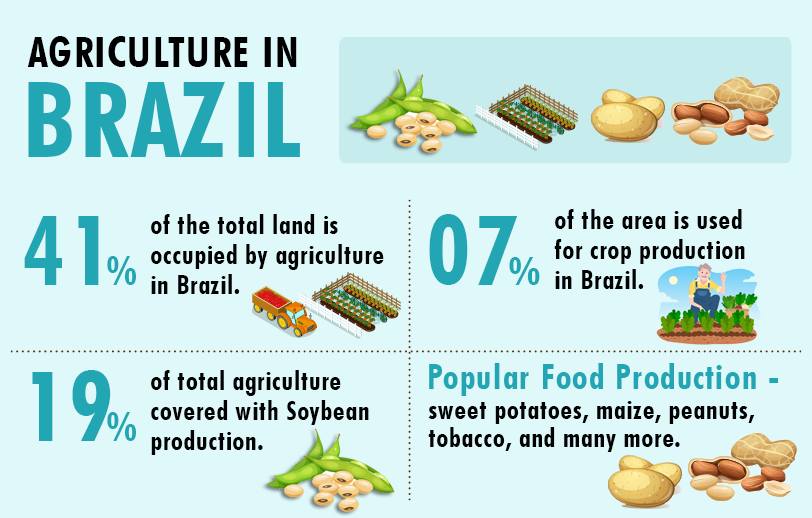Agriculture is an integral part of the world’s economy, mainly for developing countries.
It is the primary source of employment, income, and food, and these basic needs fulfilled by agriculture all over the world. According to the Food and Agriculture Organization (FAO), the share of the agricultural population is 67% of the total population. It recorded 39.4% of the GDP and in that 43% of all exports includes agriculture commodities. We are here with this blog to show all the information about top agricultural producing countries in the world, stay tuned.
Many developing agricultural producing countries depend on agriculture imports, and food certainty, and many emerging countries will not refine without a significant increase in local production. It is evident that for the last few years, the role of agriculture in world economic development has gone through important progress.
Now, let’s talk about the types of agricultural production.
Around 11% of the world’s land occupied by agriculture, and about 26% used for animal grazing. The main types of agricultural production are Food, Fuel, Fiber, and Raw Materials. Check out below the top 10 agricultural producing countries with full information.
Top Agricultural Producing Countries in World
The following are 10 best agri countries that are producing the best food commodities in the world. Have a look at agricultural producing countries.
1. China
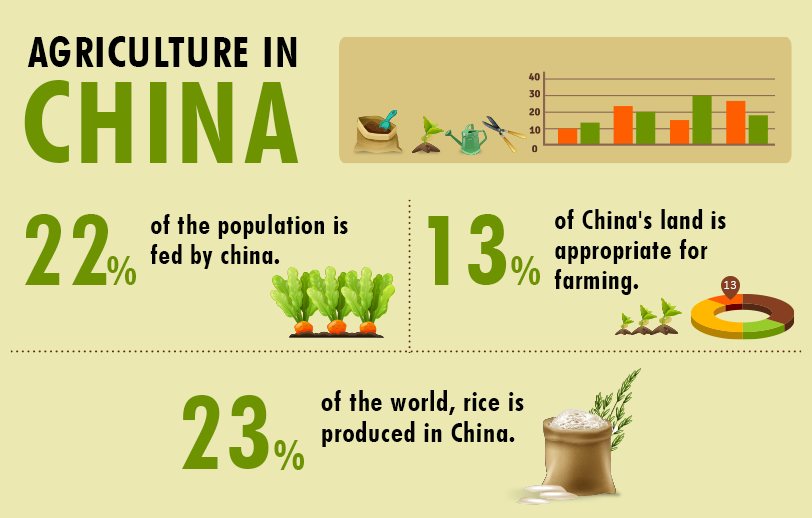
China has 7% of the arable land and with that, they feed 22% of the world’s population. In the 20th century, China struggled to feed its large population. After that, upgrading farming policies and technologies made china big-time self-sufficiency and growth. China’s top economic planning body alert that this would be difficult to keep.
Agriculture in China
- China’s land is highly employed for agriculture.
- Vegetables are planted in China, on the roads, and on many building walls.
- In 1949, China lost ⅕ of its arable land, and now only 10% to 15% of China’s land is adequate for agriculture.
- 545,960 square kilometers of land is irrigated in China.
- China is the largest rice-producing country in the world. With this, they produced soybeans, kaoliang (sorghum), wheat, millet, and corn.
2. United States
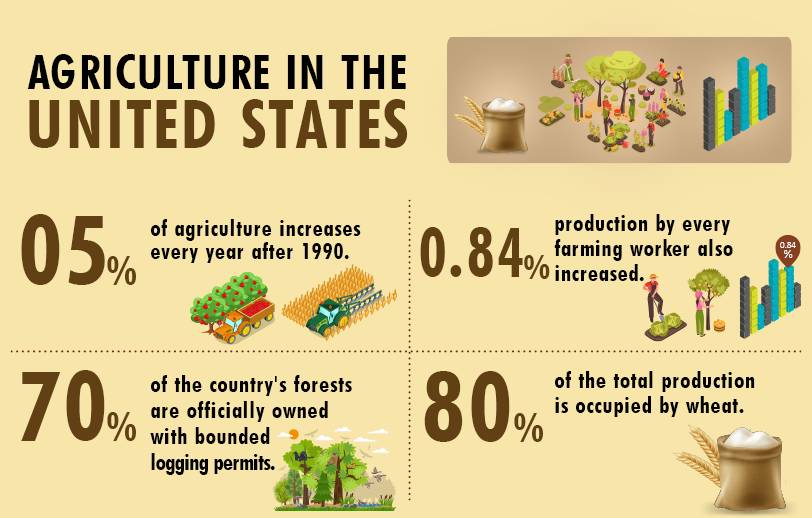
The United States is known for its agriculture science and provides some advanced agriculture technology in the world. It proves a role model for many countries in the agriculture sector, and the United States agriculture is developing continually with increasing rates. Developing here refers to scientific soil, crop analysis, more innovative machinery, and increased use of computers. In short, we can say that the United States is the best country in agriculture technology.
Agriculture in the United States
- Agriculture in the United States expanded by 5% every year after 1990. In addition to this, the production of every farming worker increased by 0.84% every year.
- The United States produces the highest amount of timber. Approx 70% of the country’s forests officially owned with bounded logging permitted.
- The United States is a net exporter of agricultural commodities. In 2007, the agriculture census recorded 2.2 million farms covering an area for agriculture.
- In the United States, corn was the largest crop that produced an amount of 247,882,000 metric tons. And the 2nd one is soybeans with 74,598,000 metric tons. And the 3rd one is wheat that grew an amount of 69,327,000 metric tons.
- The major crops in the United States are sugar cane, potatoes, coffee, sugar beets, and bananas.
3. Brazil
Brazil is historically one of the best agricultural countries on which its economy based. Around 41% of the total land is agriculture occupied in Brazil. It has an entire land of 2.1 billion acres and the area occupied by farming is almost 867.4 million acres in Brazil. The country’s initial production priority was on sugarcane. Brazilian started farming some 12,000 years ago, with many crops including sweet potatoes, maize, peanuts, tobacco, and many more.
Agriculture in Brazil
- In the production of sugarcane, Brazil is the world leader, and it produces 600 million-plus tonnes every year.
- Brazil is the 2nd largest producer of soybeans in the world and worldwide these beans used in a vast quantity.
- Brazil is the globe’s largest exporter of coffee, beef, ethanol, and soybean.
- Around 7% of Brazil’s land area is utilized for crop production that includes soybeans.
⅓ of the planet’s oranges are produced in Brazil.
4. India
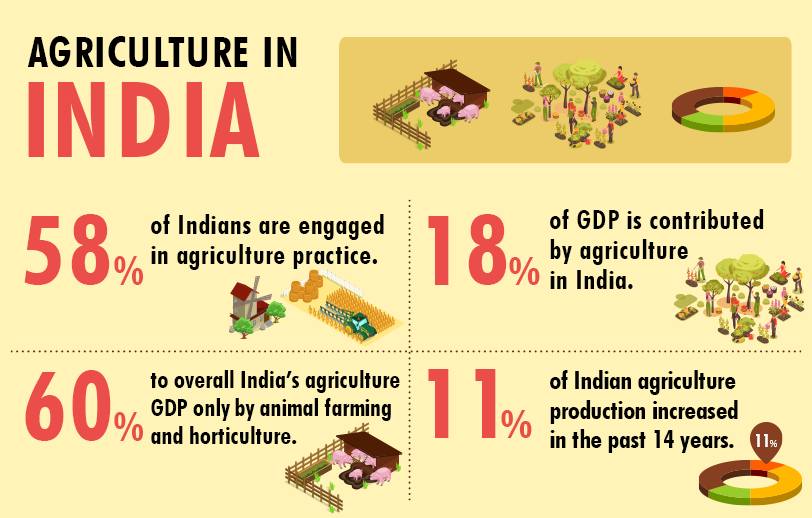
Indian agriculture provides around 58% of livelihood to Indians. In recent data, agriculture is the primary source of income for half of the population that contributed 17% to 18% to their GDP. And, Indian is the largest producer of most of the fruits in the world that includes bananas, guava, mango, lemon, papaya, and vegetables including chickpea. India produced spices too, that include ginger, pepper, and chili.
Agriculture in India
- India ranked first in the production of milk, second in dry fruits, third in fish production, fourth in egg, and fifth in poultry production worldwide.
- From 87 USD bn to 397 USD Indian agriculture production increased in the past 14 years, which is an 11% annual growth rate.
- Total 96mn hectare irrigated area in India, it is the largest in all over the world.
- Indian agriculture has many sides, and it contributes 60% to overall India’s agriculture GDP only by animal farming and horticulture.
- India is the world’s largest wheat-producing country.
 Precision irrigation fundamental for stabilising global food security
Precision irrigation fundamental for stabilising global food security
5. Russia
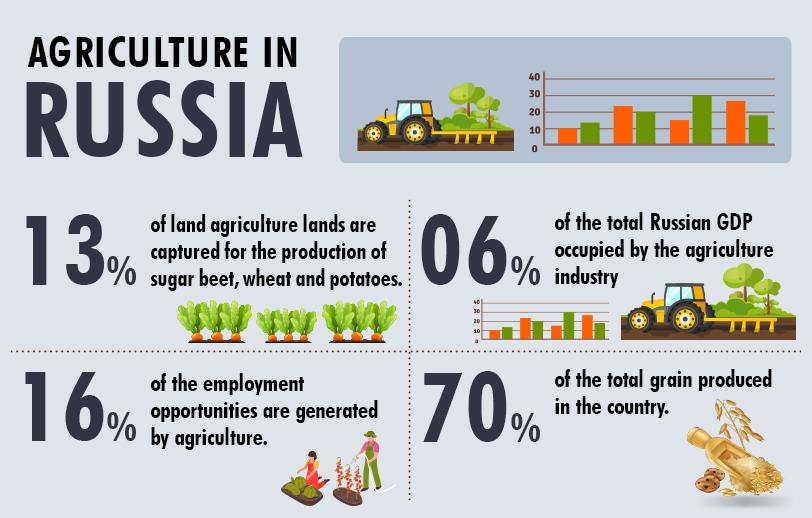
In Russia, 13% of agricultural lands captured for the production of sugar beet, wheat and potatoes. The cereals are rye, barley, oats, and maize. These are the main crops in Russia. Russia is mainly engaged in the Industrial economy, and it has a huge agriculture industry. Around 6% of the total Russian GDP occupied by the agriculture industry. With this, the Russian agriculture industry provides 16% of the employment opportunities to the general population.
Agriculture in Russia
- Over 23 million hectares of land is cultivated in Russia.
- About half of the cultivated land area is covered with grain cultivation. It produces 70% of the total grain of the country.
- Wheat is the most dominant food crop all around Russia.
- With this, beet production has grown superbly in recent years.
6. France
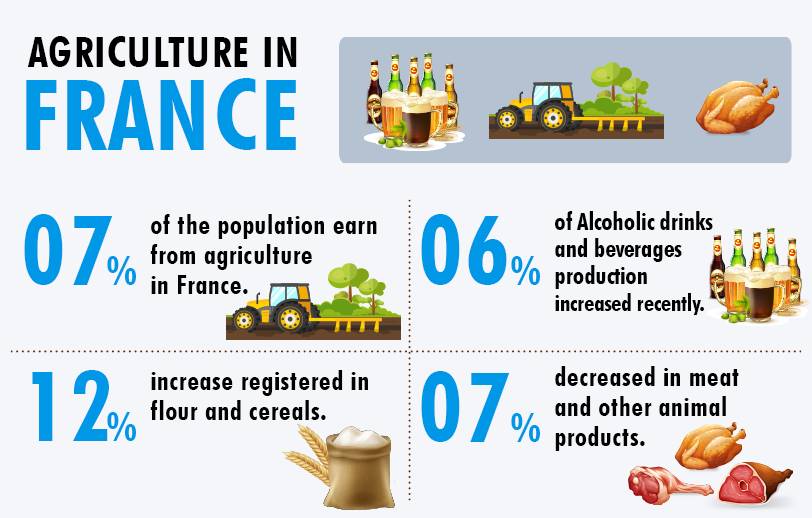
France has around 730000 farms, about 7% of the population earn from agriculture or similar sectors that are fishing or forestry. In France almost everyone is occupied in agriculture-related activities that include producing agricultural goods, etc. that shows the population of France engaged in agriculture is too much.
Agriculture in France
- All over the EU, France is the top producer of oilseeds, cereals, sugar beets, milk, wine, and beef. Sugar beets produced over 29 million metric tons in Frans.
- France is the largest exporter of alcoholic drinks and beverages, and this noted a 6 % increase in recent years.
- 12 % increase in flour and cereals and a 7 % decrease in meat and other animal products recorded in the past few years.
- The actual income from agriculture enhanced by 4% in the past period.
7. Mexico
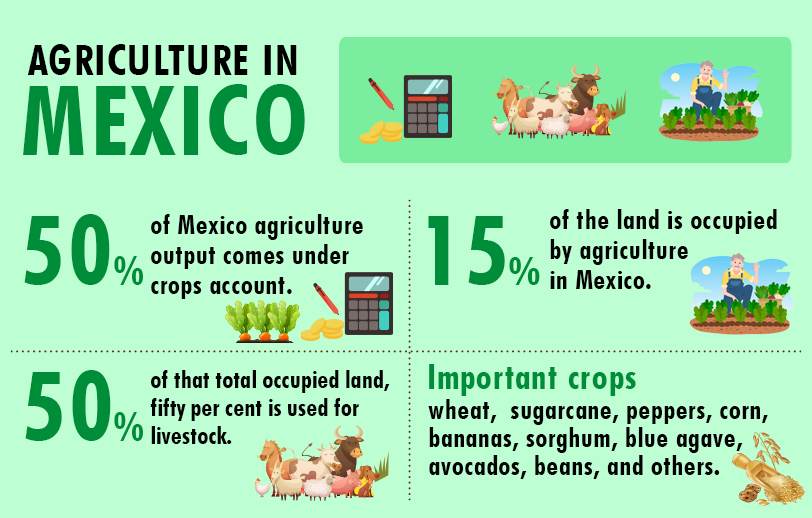
Agriculture in Mexico is crucial for the country’s economy both historically and politically. In the GDP of Mexico, agriculture contributes a small percentage. In the past, Mexico produced avocados, beans, tomatoes, peppers, maize, and many more. The country is known for its agricultural exports too. The main feature of Mexico agriculture is growing crops and ½ of the Mexico agriculture output comes under crop account.
Agriculture in Mexico
- The important crops of Mexico are wheat, sugarcane, peppers, corn, bananas, sorghum, blue agave, avocados, beans, other tropical fruits, and more.
- They are best in the export of crops that include fruits, coffee, vegetables, and sugar.
- In Mexico, around 15% of the land is occupied by agriculture and about 50% used for livestock.
- Production of livestock in Mexico is done in a considerable amount that consists of poultry, eggs, beef, and milk.
8. Japan
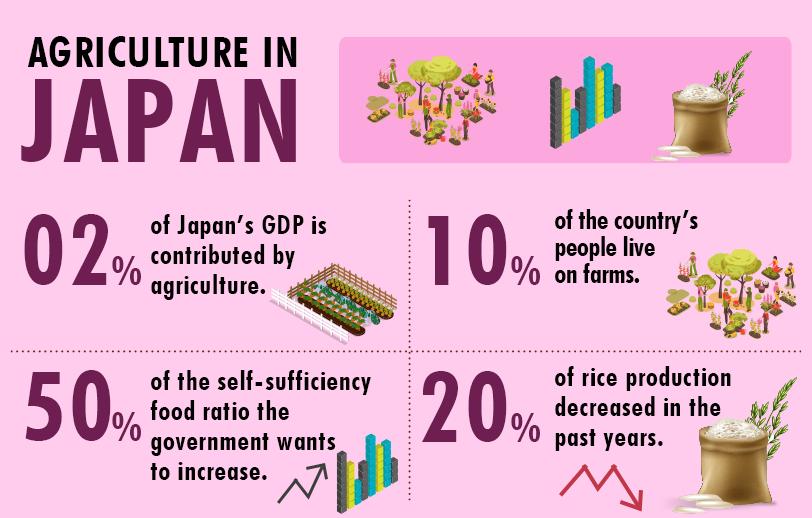
Japan agriculture contributes only 2% of GDP and around 10% of the country’s people live on farms. They fully support Japanese traditional food culture, which is rice with other food that includes grains, fish, vegetables, mountain plants, and others. Japan has a considerable population and the average area covered by farms are only 1.2 ha (3 acres), they develop concerted cultivation. With the time change, consumption of rice declined in 40 years, the daily food that is milk, other dairy products, and meat has risen exceptionally. That increases the demand for luxury foods.
Agriculture in Japan
- In Japan, there are two significant types of agriculture fields which are siden and tambo.
- From 6.09 million hectares in 1961 to 4.65 million hectares in 2006, the area under cultivation dropped in Japan.
- In Japan, approx 2 lakh hectares of land is idle, and rice production decreased by 20% in the past years.
- Japan’s self-sufficiency food ratio fell from 78% in 1961 to 39% in 2006. Now Japan’s government wants to increase it to 50%.
9. Germany
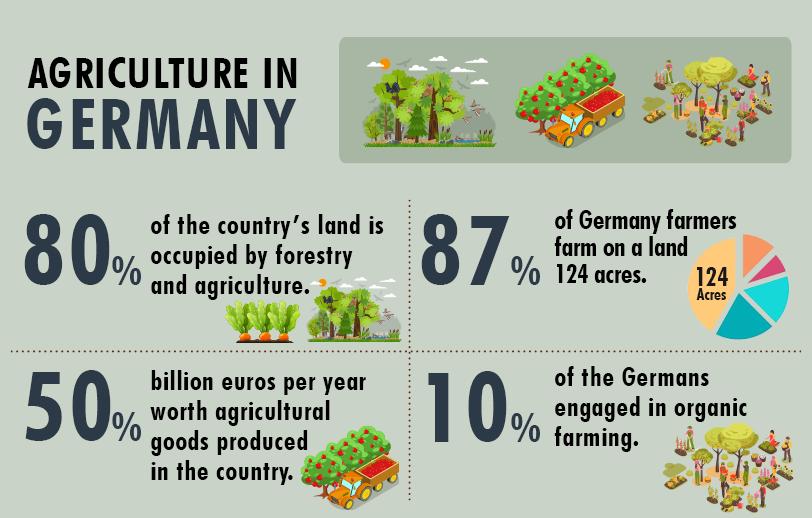
Germany’s leading agricultural food includes pork, poultry, potatoes, milk, cereals, beef, sugar beets, cabbages, barley, and wheat. And in most of the regions vegetables, fruits, and wine. Around 80% of the country’s land occupied by forestry and agriculture. In 1997, there were family farms that dominated in old western states. Approximately 87% of Germany farmers farm on a land 124 acres. In Germany, southern and western parts of river valleys covered with vineyards. Germany’s agricultural products differ from area to area.
Agriculture in Germany
- In Germany, ½ of the area occupied for land cultivation.
- Plus 50% billion euros per year worth of agricultural goods produced by the 1 million people in the country.
- Germany ranked 3rd in the world in agricultural goods export. Around ⅓ of the products exported from Germany.
- Approximately 10% of the Germans engaged in organic farming.
- Germany ranked 4th largest beer producer in the world.
10. Turkey
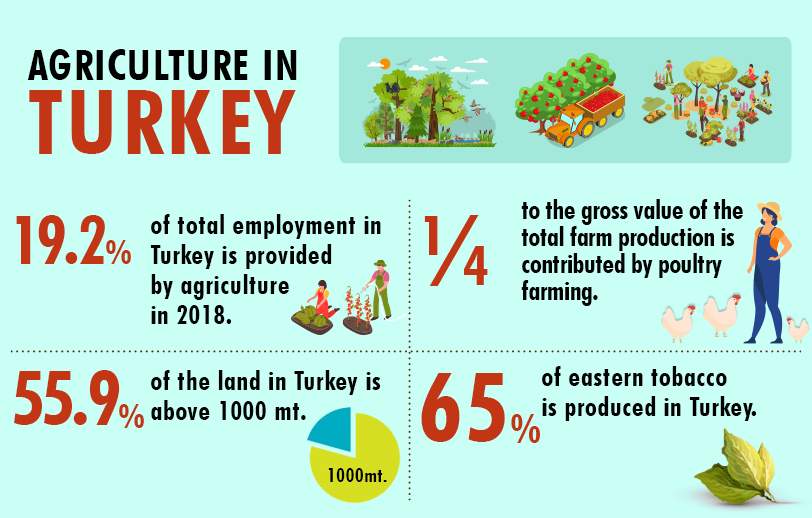
Agriculture in Turkey is the primary occupation of the Turkish population, the industries and service sectors increasing constantly. Turkey is the self-sufficient food procuring country in the world. They have suitable climate conditions, fertile soil, and significant rainfall that allows the production of every type of crop. In almost all of the Turkey regions, farming conducted. In mountain regions, poultry farming is done on a vast scale. That contributes ¼ to the gross value of the total farm production. In Turkey, wheat is the most produced grain and the 2nd produced commodity is sugar beet, 3rd is milk, and last is cows.
Agriculture in Turkey
- Around 100 million turkeys live on the farms.
- Approx 19.2% of total employment in Turkey is provided by the agriculture sector in 2018.
- It is the largest producer of apricots, figs, raisins, and hazelnuts.
- Turkey is the fourth producer of grapes and vegetables.
- It is the sixth-largest producer of tobacco.
Countries with Agriculture as Main Occupation
We are showing three countries that have the main occupation in agriculture. Check out below.
- Liberia with 76.9% of GDP
- Somalia with 60.2% of GDP
- Guinea-Bissau with 55.8% of GDP













